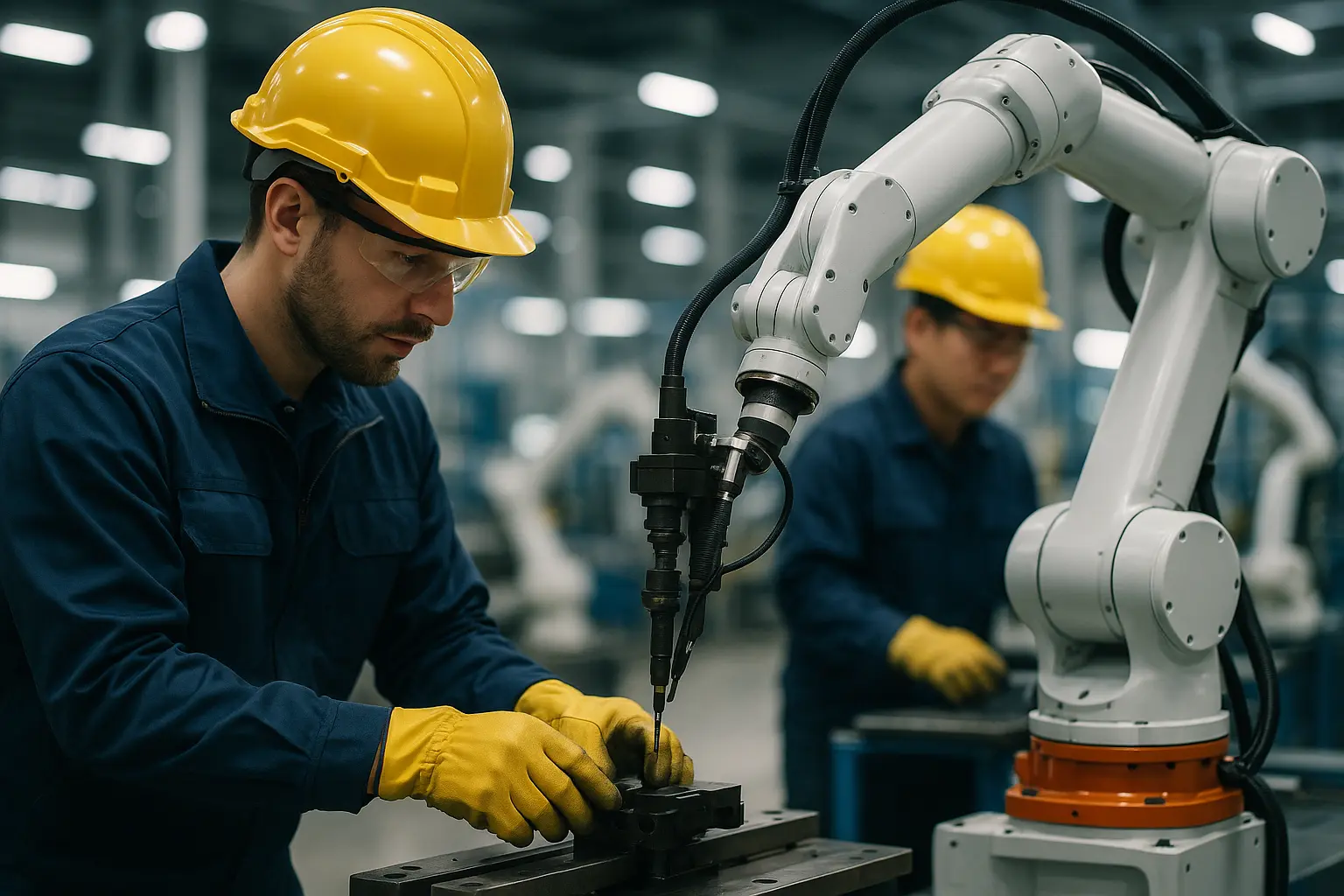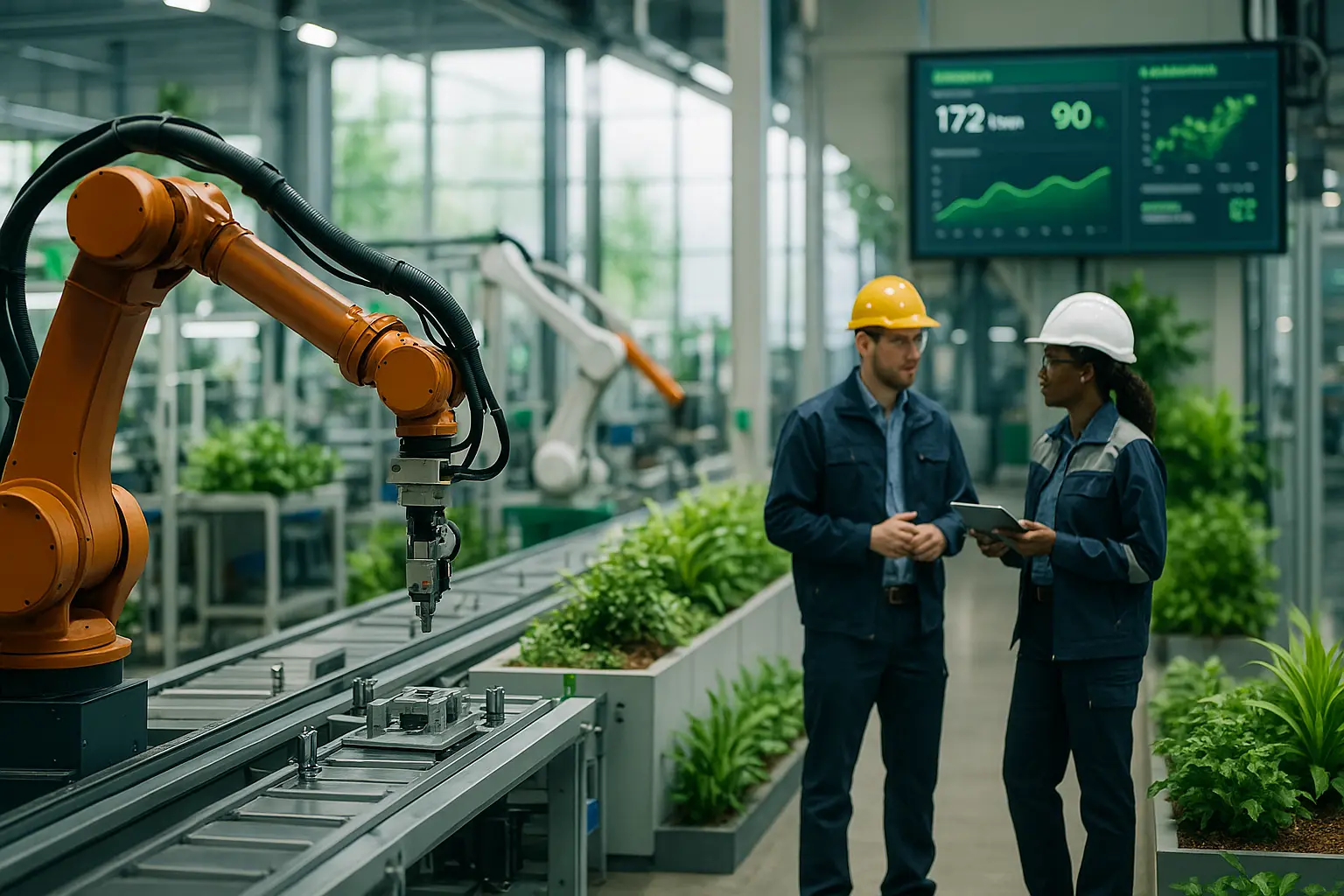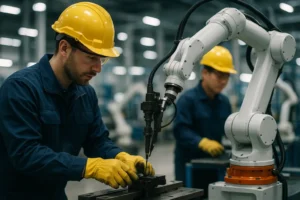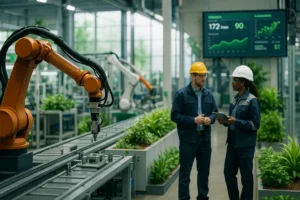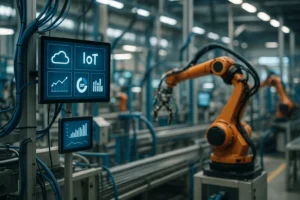What Is Robotic Process Automation? A Beginner’s Guide
In the kaleidoscope of today’s digital transformation, Robotic Process Automation (RPA) stands out as one of the most transformative developments. As businesses across the globe grapple with the demands of quick turnarounds and heightened customer expectations, the allure of automation grows stronger. Imagine a world where repetitive tasks are executed flawlessly by tireless bots, allowing humans to channel their creativity towards more strategic endeavors. Welcome to the realm of RPA, where software robots are not just futuristic fantasies but vital components of modern businesses.
In this guide, we will delve into the essence of RPA, exploring its potential to revolutionize business processes, enhance customer experiences, and redefine what productivity looks like in 2025. Whether you’re new to the concept or seeking to deepen your understanding, this comprehensive journey will illuminate the future of work.
Understanding Robotic Process Automation
When we hear the term Robotic Process Automation, images of mechanical humanoids might spring to mind. However, RPA is less about physical robots and more about software bots that can be seamlessly programmed to automate business tasks. The beauty of RPA lies in its simplicity; these software agents mimic human actions to execute any repetitive task, be it data entry, customer onboarding, or even generating reports.
At its core, RPA is about applying technology to streamline processes that were traditionally manual. Unlike other automation tools that require complex coding, RPA operates at the user interface level. This means that the bots can interact with existing applications, just as humans would, to carry out tasks across multiple systems without the need for extensive integration.
The implications of this are vast. From reducing human error and cutting down operational costs to freeing up employees for more value-driven activities, RPA is revolutionizing the business landscape. In essence, RPA provides the bridge between the present and the future, leading organizations into a new era of efficiency and innovation.
How Businesses are Embracing Automation
Today, the integration of RPA in business operations is not just a passing trend but a strategic move embraced by forward-thinking enterprises worldwide. This technology offers organizations the opportunity to enhance service delivery, improve customer experiences, and create a more agile workplace.
The utility of RPA spans across different sectors. In finance, bots handle data-intensive tasks such as account reconciliation and invoice processing. In healthcare, automation ensures that patient records are meticulously managed, reducing the risk of human error. Retailers, on the other hand, utilize RPA to streamline inventory management and customer service operations.
Companies are increasingly realizing the tangible benefits of RPA, which include but are not limited to:
- Increased Efficiency: By automating routine processes, businesses can accomplish more in less time.
- Cost-Effectiveness: Automation reduces the need for manual labor, leading to significant cost savings.
- Enhanced Accuracy: Bots perform tasks consistently without the risk of human error, ensuring data integrity.
- Scalability: Businesses can quickly scale operations up or down without additional employee training.
By embracing RPA, businesses are not only driving operational excellence but also fostering a culture of innovation and adaptability in an ever-evolving marketplace.
The Role of RPA in Transforming Customer Experience
In the modern business ecosystem, customer experience reigns supreme. It’s no longer just about delivering a product or service; it’s about crafting a journey that leaves a lasting impression. This is where RPA steps in, offering myriad possibilities to elevate customer interactions.
Picture this: a customer contacts support with an issue. Instead of wading through a labyrinth of phone menus, an RPA-powered system swiftly addresses their concern, providing real-time solutions with unmatched efficiency. Through automation, businesses can ensure that customer inquiries are resolved promptly, regardless of the time or volume.
Moreover, RPA can personalize customer experiences. By analyzing data patterns, businesses can anticipate customer needs and offer tailored solutions proactively, enhancing satisfaction and fostering loyalty. In e-commerce, for instance, RPA bots can handle order processing, respond to queries, and even execute personalized marketing campaigns.
It’s clear that RPA is not just about enhancing processes internally; it’s about transforming the very face of customer service. In a world where time is of the essence, the ability to provide instantaneous and personalized service can set a business apart from its competitors. As we continue to navigate the digital age, RPA stands as a powerful ally in the quest for superior customer experience.
Implementing RPA: Challenges and Considerations
While the benefits of RPA are evident, implementing this technology is not without its challenges. As with any transformative initiative, businesses must navigate a series of considerations to ensure successful adoption and integration.
Firstly, it’s crucial to identify the right processes for automation. Not every task is suitable for RPA; those that are repetitive, rule-based, and involve structured data are ideal candidates. A thorough evaluation will help in selecting the tasks that will yield the most significant impact.
Another consideration is the human factor. While RPA reduces the load of mundane tasks, it’s essential to address employee concerns about job displacement. By fostering a culture of continuous learning and emphasizing the collaboration between humans and bots, organizations can ensure a seamless transition.
Moreover, businesses must tackle technical hurdles. This includes ensuring compatibility with existing systems and managing the maintenance and scaling of bots. Tools like UiPath offer comprehensive solutions that simplify this process, making implementation more manageable.
Finally, compliance and security cannot be overlooked. As bots handle sensitive data, measures must be in place to safeguard this information from potential breaches.
In conclusion, while RPA offers transformative benefits, its successful implementation requires careful planning and consideration of both technical and human elements.
As we stand on the threshold of a new era, it’s clear that RPA is more than just an efficiency tool; it’s a catalyst for innovation in the workplace. By automating repetitive and mundane tasks, RPA paves the way for humans to focus on what truly matters: creativity, strategy, and meaningful customer engagement.
The future of work will be characterized by a harmonious coexistence between human ingenuity and automation. As we continue to explore the capabilities of RPA, businesses will undoubtedly uncover new possibilities that redefine productivity and reshape industries.
In this dynamic landscape, staying informed and adaptable is key. Embracing RPA is not just about keeping up with trends; it’s about leading the charge into a future where automation and human potential converge to create a better, more efficient world.
FAQ
What exactly is Robotic Process Automation (RPA)?
Robotic Process Automation, commonly referred to as RPA, is a technology that allows businesses to automate routine and repetitive tasks traditionally performed by humans. It uses software robots to mimic human interactions with digital systems, enhancing efficiency and reducing errors.
How does RPA differ from traditional automation?
While traditional automation requires programming and scripting to automate tasks, RPA is designed to be more user-friendly and flexible. It uses software bots that can be trained to perform tasks by observing human actions, making it easier to implement and adapt to changing processes.
What types of tasks can RPA handle?
RPA is best suited for tasks that are repetitive, rule-based, and involve digital data. Examples include data entry, processing transactions, extracting information from documents, and transferring data between applications. Essentially, any task that follows a predictable pattern can be automated using RPA.
What are the benefits of implementing RPA in a business setting?
Implementing RPA can lead to numerous benefits, including increased operational efficiency, reduced human errors, cost savings, and the ability to scale processes quickly. Additionally, it frees up human employees to focus on more complex and strategic tasks, enhancing overall productivity.
Are there any limitations or challenges associated with RPA?
While RPA offers several benefits, it also has limitations. It works best with structured data and may struggle with tasks involving unstructured or highly variable data. Additionally, setting up and maintaining RPA systems requires careful planning and governance to ensure they remain effective and aligned with business goals.

